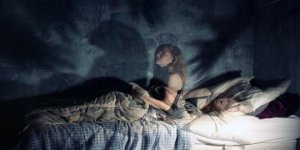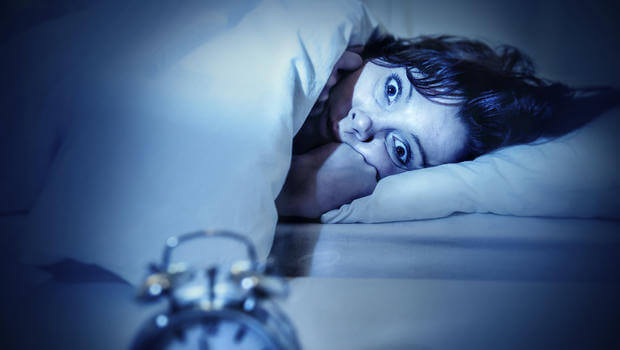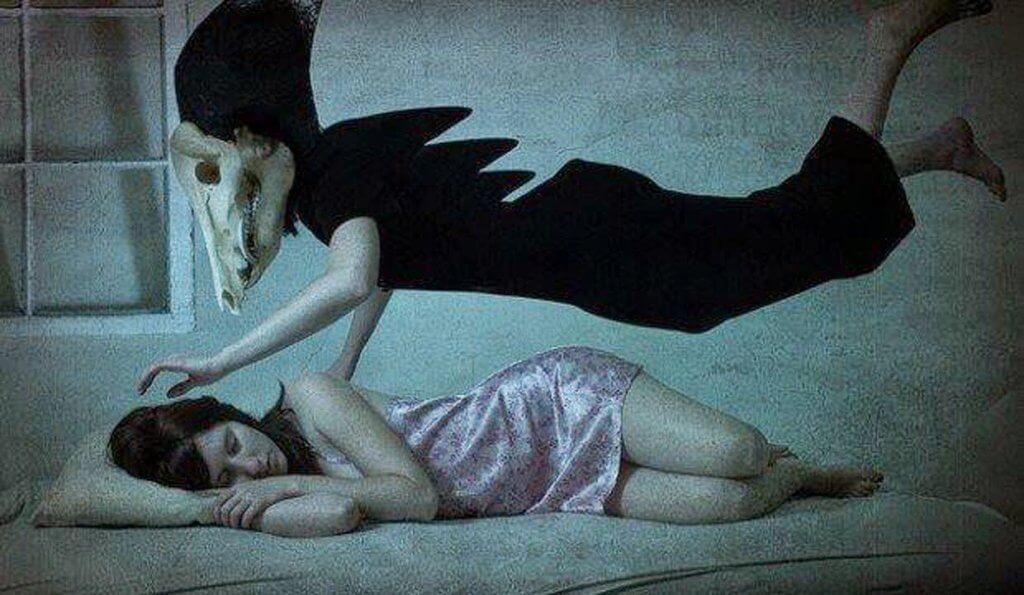Sleep Paralysis: A Terrifying Experience

Before going deeper into sleep paralysis, if you were asked what a dream is, how would you define it? It’s not easy to answer this question, at least from a non-academic point of view. Even so, we can say that sleep is a fundamental physiological function.
We could define it as a “functional, reversible, and cyclic state, with some characteristic manifestations such as a relative immobility and/or an increase in the response threshold to external stimuli. At an organic level, variations in biological parameters occur, accompanied by a modification of the mental activity that characterizes dreaming” [Translation] (Buela-Casal, 1990a).
During sleep, big changes happen in your body. This encompasses everything from blood pressure, heart and breathing rate, body temperature, hormonal secretions, and others. In addition, it has also been observed that there are many variables, both physical and behavioral, that are largely responsible for many sleep disorders.
Sleep disorders
The international classification of sleep disorders includes four categories (Buela-Casal and Sierra, 1996a):
- Dyssomnias: disorders of sleep onset and maintenance, excessive drowsiness, and sleep related to the circadian rhythm.
- Parasomnias: disorders of awakening, of the sleep-wake association, and of rapid eye movement sleep (REM).
- Disorders associated with medical or psychiatric disorders.
- Other possible disorders that do not have enough information to be considered specific to sleep.
In this article, we are going to focus on one type of parasomnia: sleep paralysis.

What is sleep paralysis?
The paranormal events that some people claim to have suffered (diabolical attacks, visits from spirits and abductions by extraterrestrials, among others) are probably the result sleep paralysis.
Sleep paralysis could explain the stories of ghosts and extraterrestrials. The victims perceive an intense presence, usually a harmful one. They also recount unusual kinesthetic sensations: someone taking them out of bed, vibrating, flying, or falling.
Such episodes can lead to out-of-body experiences. Sleep paralysis may be scary, but it’s never dangerous. Also, fortunately, these episodes only last a few seconds.
However, they’re not paranormal at all. Sleep paralysis is a passing inability to perform any kind of voluntary movement and takes place during the transitional period between a sleep state and a waking state.

Sleep paralysis can occur when falling asleep or when waking up. It usually comes along with feeling upset in some sense. It usually lasts between one and three minutes, after which the paralysis subsides spontaneously.
The paralysis usually disappears automatically if the person is touched or shaken. Although the person can’t move, they are able to see and hear normally. In some cases, they can even make sounds. As you can see, an episode of sleep paralysis can be terrifying and result in scary memories.
“Sleep paralysis is a transitory inability to perform any kind of voluntary movement that takes place during the transition period between the dream state and the waking state. “
Symptoms of sleep paralysis
There are several symptoms that occur during these episodes, most of them quite scary.
- Visual hallucinations. There are people who say they have seen strangers in their bedroom. That presence is usually perceived through periphery vision or in the shadows.
- Auditory hallucinations. Elementary, mechanical, and intense sounds are usually perceived. These could include buzzing, murmuring, hissing, running, roaring, chimes, beating, vibrations, whistling, screaming, or whining. In other cases, they are identifiable sounds such as telephone ringing, sirens, tools, electric motors, knocking on the door, the dragging of furniture, glass breaking, strange music.
- Difficulty breathing. People with sleep paralysis may feel pressure in their chest, shortness of breath, or suffocation. They are upsetting and may cause panic. However, there is no possibility of dying or suffocating.
- Sensation of a presence. The person may feel like there is someone in the house. They may feel someone moving around, entering the room, and approaching the bed. Some people report feeling like someone is watching them.

Why does it happen?
Sleep paralysis sometimes occurs with other disorders such as sleep apnea and, mainly, narcolepsy. However, it usually happens in isolation, when the person is going through a lot of stress.
At bedtime there are neural circuits that remain overexcited due to stress. Then, nightmares occur and the person wakes up abruptly. However, the body does not react as quickly because it is in the REM phase, so the muscles are toneless. That’s why the person cannot move, even if he is aware of what’s happening around him.
If you have ever had something like this happen to you, don’t worry. It’s not that unusual. It’s important that you do not get scared, even though that may not be easy. When you remember the episode, keep in mind that it was just a bad dream. Something like a nightmare, but with your eyes open.
Bibliography:
Chóliz, M. (1994). Cómo vencer el insomnio. Madrid: Pirámide.
Buela-Casal, G. (2002). Trastornos del sueño. Madrid: Síntesis.
Before going deeper into sleep paralysis, if you were asked what a dream is, how would you define it? It’s not easy to answer this question, at least from a non-academic point of view. Even so, we can say that sleep is a fundamental physiological function.
We could define it as a “functional, reversible, and cyclic state, with some characteristic manifestations such as a relative immobility and/or an increase in the response threshold to external stimuli. At an organic level, variations in biological parameters occur, accompanied by a modification of the mental activity that characterizes dreaming” [Translation] (Buela-Casal, 1990a).
During sleep, big changes happen in your body. This encompasses everything from blood pressure, heart and breathing rate, body temperature, hormonal secretions, and others. In addition, it has also been observed that there are many variables, both physical and behavioral, that are largely responsible for many sleep disorders.
Sleep disorders
The international classification of sleep disorders includes four categories (Buela-Casal and Sierra, 1996a):
- Dyssomnias: disorders of sleep onset and maintenance, excessive drowsiness, and sleep related to the circadian rhythm.
- Parasomnias: disorders of awakening, of the sleep-wake association, and of rapid eye movement sleep (REM).
- Disorders associated with medical or psychiatric disorders.
- Other possible disorders that do not have enough information to be considered specific to sleep.
In this article, we are going to focus on one type of parasomnia: sleep paralysis.

What is sleep paralysis?
The paranormal events that some people claim to have suffered (diabolical attacks, visits from spirits and abductions by extraterrestrials, among others) are probably the result sleep paralysis.
Sleep paralysis could explain the stories of ghosts and extraterrestrials. The victims perceive an intense presence, usually a harmful one. They also recount unusual kinesthetic sensations: someone taking them out of bed, vibrating, flying, or falling.
Such episodes can lead to out-of-body experiences. Sleep paralysis may be scary, but it’s never dangerous. Also, fortunately, these episodes only last a few seconds.
However, they’re not paranormal at all. Sleep paralysis is a passing inability to perform any kind of voluntary movement and takes place during the transitional period between a sleep state and a waking state.

Sleep paralysis can occur when falling asleep or when waking up. It usually comes along with feeling upset in some sense. It usually lasts between one and three minutes, after which the paralysis subsides spontaneously.
The paralysis usually disappears automatically if the person is touched or shaken. Although the person can’t move, they are able to see and hear normally. In some cases, they can even make sounds. As you can see, an episode of sleep paralysis can be terrifying and result in scary memories.
“Sleep paralysis is a transitory inability to perform any kind of voluntary movement that takes place during the transition period between the dream state and the waking state. “
Symptoms of sleep paralysis
There are several symptoms that occur during these episodes, most of them quite scary.
- Visual hallucinations. There are people who say they have seen strangers in their bedroom. That presence is usually perceived through periphery vision or in the shadows.
- Auditory hallucinations. Elementary, mechanical, and intense sounds are usually perceived. These could include buzzing, murmuring, hissing, running, roaring, chimes, beating, vibrations, whistling, screaming, or whining. In other cases, they are identifiable sounds such as telephone ringing, sirens, tools, electric motors, knocking on the door, the dragging of furniture, glass breaking, strange music.
- Difficulty breathing. People with sleep paralysis may feel pressure in their chest, shortness of breath, or suffocation. They are upsetting and may cause panic. However, there is no possibility of dying or suffocating.
- Sensation of a presence. The person may feel like there is someone in the house. They may feel someone moving around, entering the room, and approaching the bed. Some people report feeling like someone is watching them.

Why does it happen?
Sleep paralysis sometimes occurs with other disorders such as sleep apnea and, mainly, narcolepsy. However, it usually happens in isolation, when the person is going through a lot of stress.
At bedtime there are neural circuits that remain overexcited due to stress. Then, nightmares occur and the person wakes up abruptly. However, the body does not react as quickly because it is in the REM phase, so the muscles are toneless. That’s why the person cannot move, even if he is aware of what’s happening around him.
If you have ever had something like this happen to you, don’t worry. It’s not that unusual. It’s important that you do not get scared, even though that may not be easy. When you remember the episode, keep in mind that it was just a bad dream. Something like a nightmare, but with your eyes open.
Bibliography:
Chóliz, M. (1994). Cómo vencer el insomnio. Madrid: Pirámide.
Buela-Casal, G. (2002). Trastornos del sueño. Madrid: Síntesis.
All cited sources were thoroughly reviewed by our team to ensure their quality, reliability, currency, and validity. The bibliography of this article was considered reliable and of academic or scientific accuracy.
Chóliz, M. (1994). Cómo vencer el insomnio. Madrid: Pirámide.
Buela-Casal, G. (2002). Trastornos del sueño. Madrid: Síntesis.
This text is provided for informational purposes only and does not replace consultation with a professional. If in doubt, consult your specialist.







